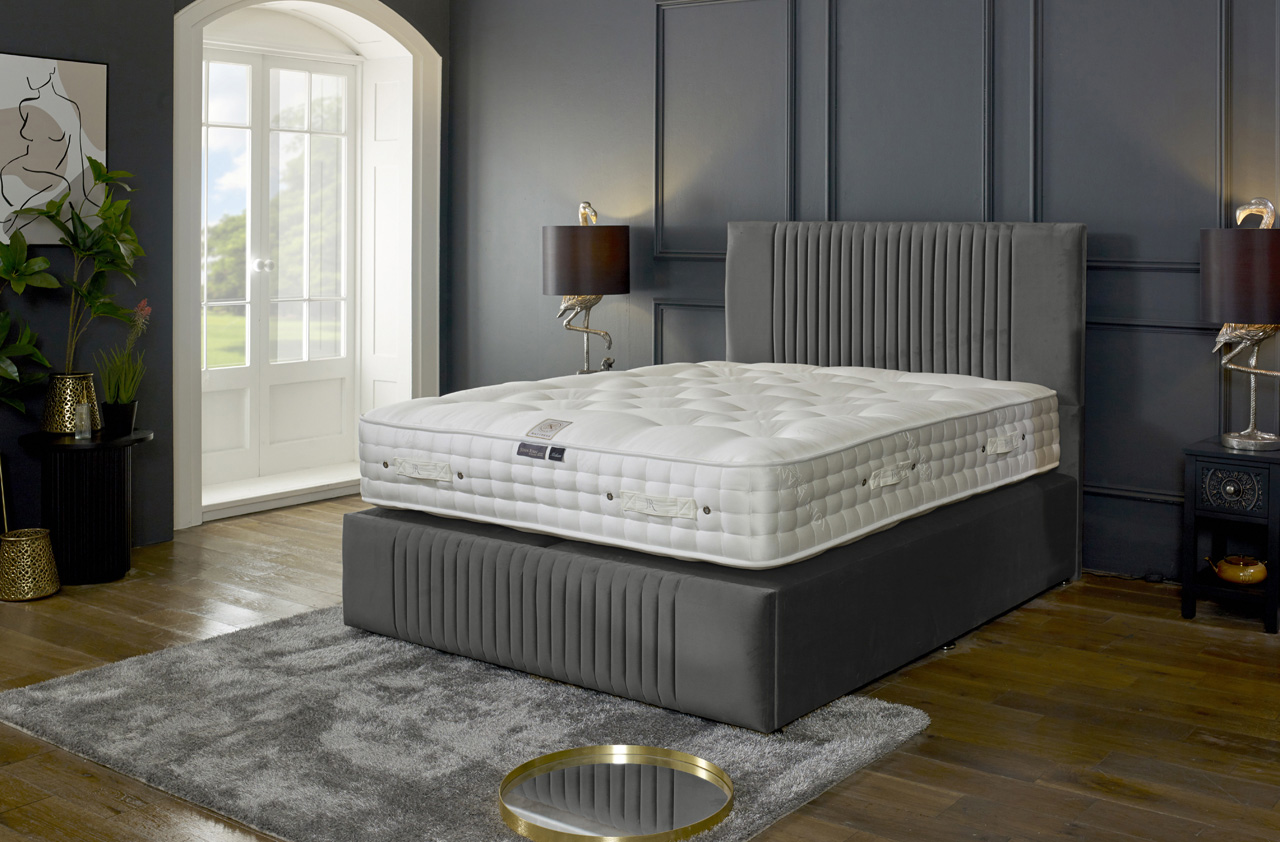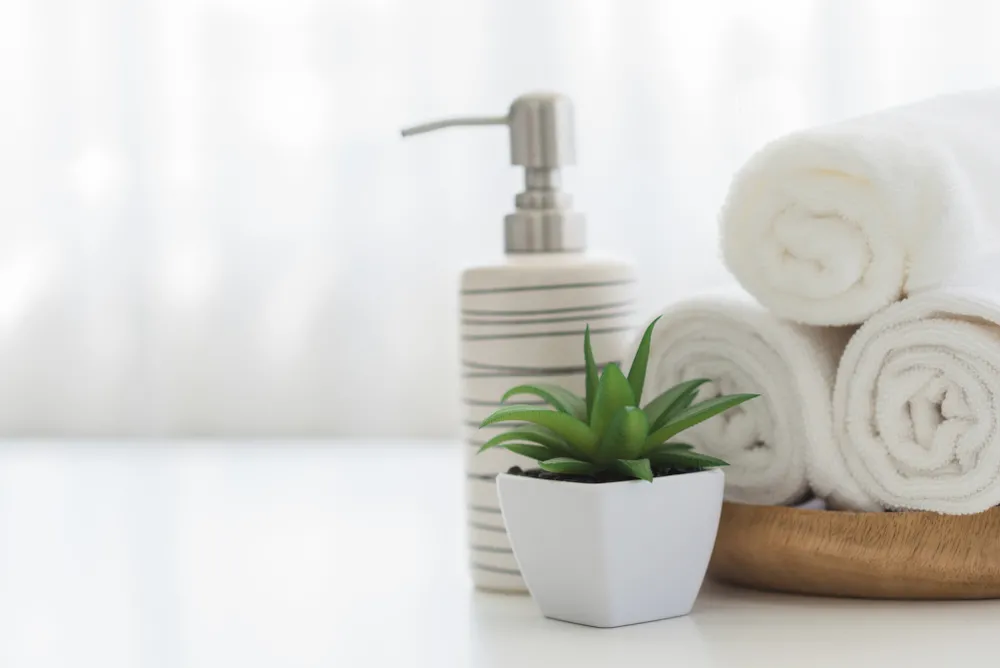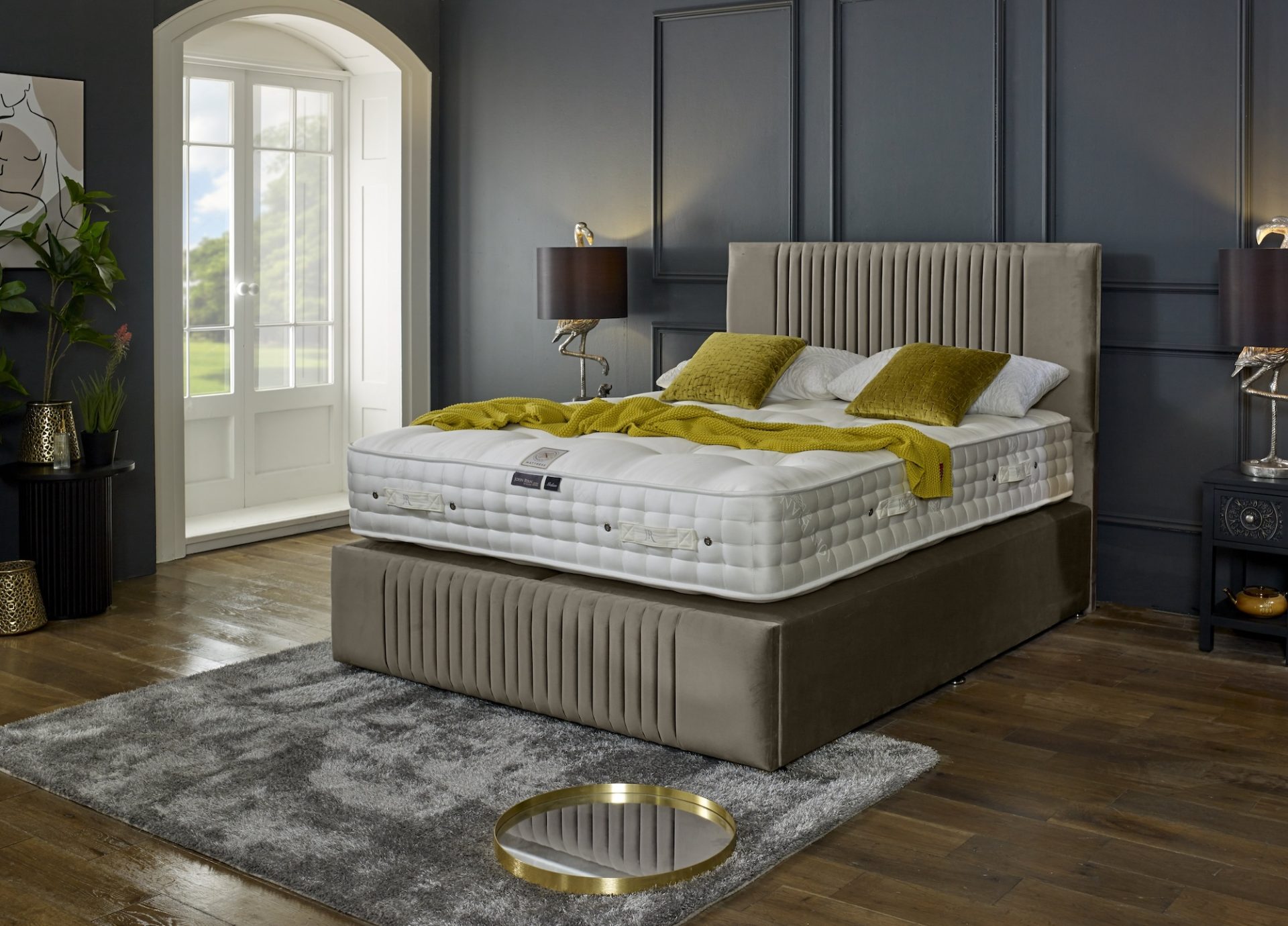Sleep & Well Being, Mattress Tips
November 20247 Top Tips for Tackling Nighttime Hay Fever
Hay fever sufferers know the struggle all too well: You crawl into bed, ready to relax, only to be disrupted by itchy eyes, a scratchy throat, and that relentless tickle in your nose. While completely avoiding hay fever triggers may not be possible, there are some tried-and-tested ways to reduce nighttime symptoms for a restful night. Ryan Kerr, the owner and sleep expert here at John Ryan By Design, shares his top seven tips in this hayfever sleep guide to help you tackle hay fever symptoms before bedtime and achieve better sleep quality during allergy season.
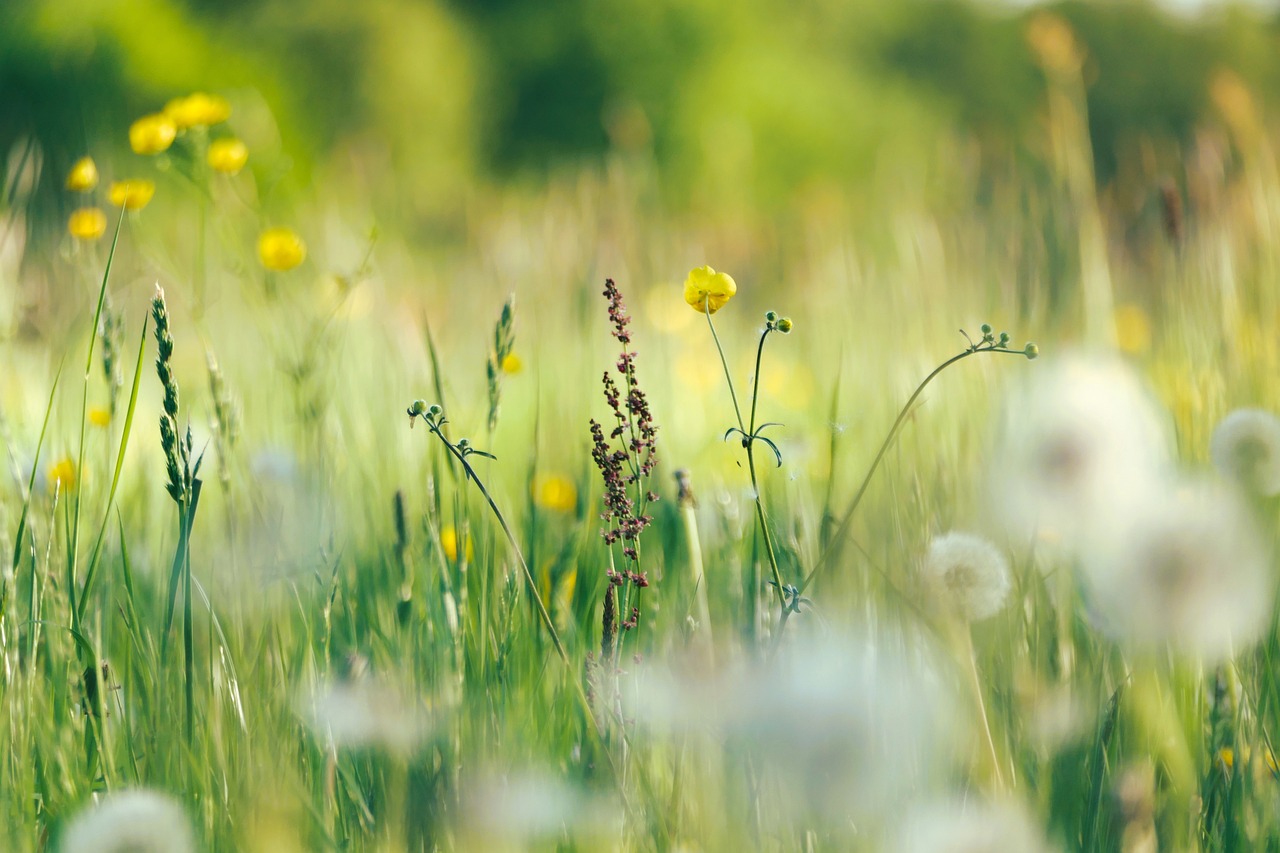
1. Keep Your Bedroom Window Closed
While fresh air can make your room feel more comfortable, opening your windows during hay fever season can bring in unwelcome guests—pollen and other allergens that intensify hay fever symptoms. During peak pollen times, especially in the early morning and late afternoon, allergens fill the air and easily drift into open windows. Once inside, pollen particles can settle on bedding, curtains, and furniture, making it challenging to avoid exposure throughout the night.
Why Closing the Bedroom Window Helps
Keeping your windows closed creates a protective barrier against outdoor allergens. This simple step prevents pollen from accumulating on your bed, which is crucial since direct contact with these allergens can worsen symptoms. By reducing the presence of pollen in your sleep space, you can minimize nasal congestion, itchy eyes, and other nighttime hay fever symptoms that can disrupt your rest.
Pro Tip: Use a HEPA Air Purifier for Fresh, Allergen-Free Air
If you crave fresh air but want to avoid pollen, a HEPA (High-Efficiency Particulate Air) purifier is an excellent alternative. HEPA air purifiers are designed to filter out 99.97% of particles as small as 0.3 microns, including pollen, dust mites, and other airborne allergens. Running an air purifier in your bedroom helps maintain a clean, pollen-free environment without the need to open windows which can help you sleep better if you suffer from hayfever.
How to Maximize Your Air Purifier’s Effectiveness
- Placement Matters: Position the purifier near your bed or in an area where it has ample space to circulate air effectively. Avoid placing it against walls or behind furniture that might block airflow.
- Run It Early: Turn on the air purifier about an hour before bedtime to ensure that the room is thoroughly filtered before you sleep. For best results, keep it running throughout the night to continuously capture any stray allergens that may be floating around.
- Regular Maintenance: Be sure to replace or clean the HEPA filter as recommended by the manufacturer. A clean filter is essential for optimal performance, as a clogged filter can’t trap particles as effectively and may even recirculate some allergens.
- Close Doors and Windows: For maximum benefit, keep your bedroom door closed while using the air purifier. This minimizes the chances of new pollen particles entering your room, allowing the purifier to focus on the allergens already present.
Bonus Tip: Consider a Dehumidifier for Added Comfort
If you live in a humid area, combining an air purifier with a dehumidifier can improve air quality further. High humidity can make allergy symptoms worse by promoting dust mites and mould growth, which also act as irritants. A dehumidifier helps regulate indoor moisture levels, keeping the air dry and comfortable without requiring an open window.
By taking these steps to keep your windows closed and using an air purifier, you can enjoy a cool, fresh, and pollen-free environment, setting the stage for a much more restful night’s sleep.
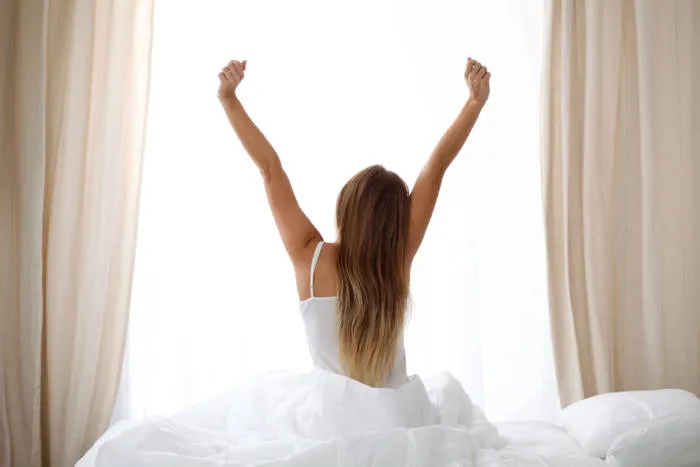
Create a Pollen Barrier
If you prefer some airflow in your room but want to keep pollen at bay, creating a “pollen barrier” is an effective way to reduce allergens settling on your bedding. This strategy helps protect your sleeping space from pollen that sneaks in through open windows or on clothing, ultimately minimizing the nighttime symptoms that disrupt sleep.
Morning Sheet Shield
Each morning, place a clean, lightweight sheet or blanket over your duvet and pillows. This extra layer acts as a “shield” to catch pollen, dust, and other airborne allergens that may settle on your bedding throughout the day. By covering your bed, you reduce the chance of allergens directly landing on your primary bedding, which can make a noticeable difference when it’s time to sleep.
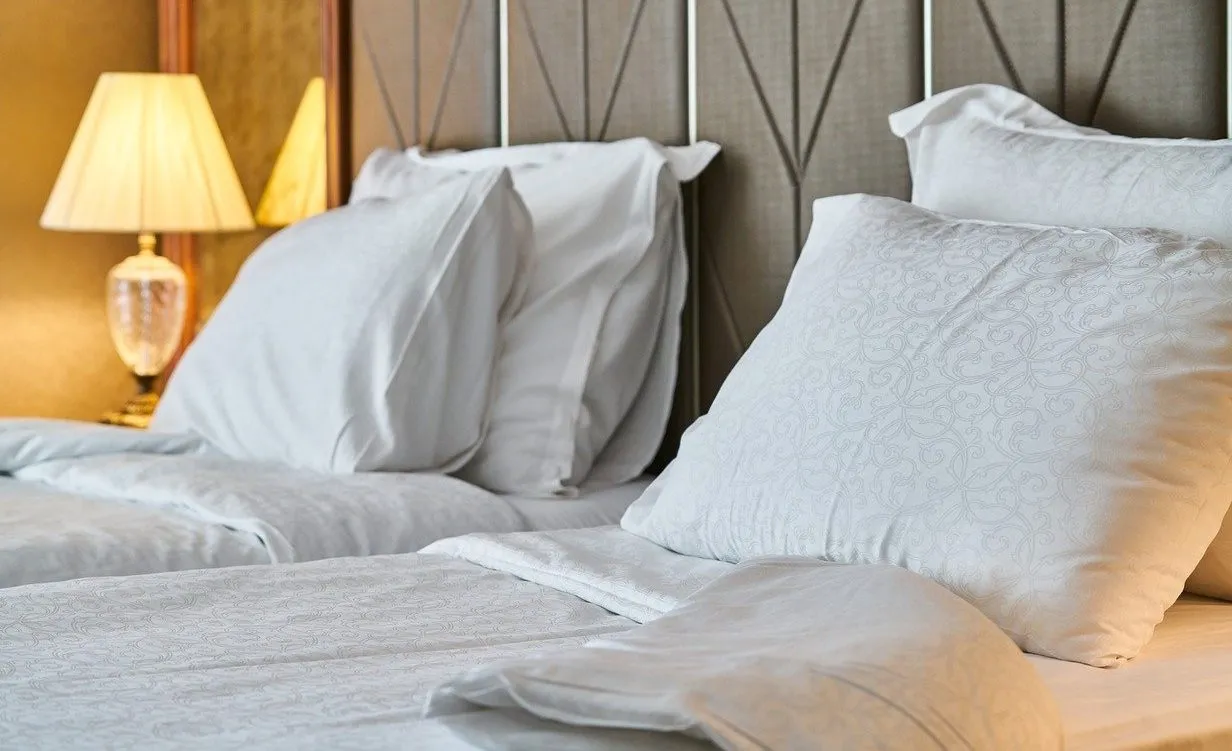
Why Pollen Barrier in the Bedroom Work
Pollen particles are tiny but can cling to soft surfaces, including your bed linens. By adding this extra layer, you create a temporary barrier that intercepts these particles, making it easier to control allergens in your sleeping environment. However, the drawback is that its resource-intensive having to keep washing sheets each night so there are questions about pollen barriers environmental credentials and sustainability.
Regular Washing Routine
At night, carefully remove this top sheet or blanket and place it in a laundry hamper to avoid shaking off pollen onto your bedding. For best results, wash this “pollen shield” once or twice a week in hot water to ensure it stays pollen-free. This routine prevents the allergens you encounter during the day from hitching a ride into your bed.
Additional Tips for Your Pollen Barrier
- Consider Pillow Covers – Use allergy-proof pillow covers that can be washed frequently to help reduce allergens further. This can add another line of defence, especially if you tend to rest your head on pillows for reading or lounging during the day.
- Choose a Lightweight Fabric – Select a breathable, lightweight sheet or blanket for your pollen shield. Cotton or bamboo fabric options work well because they’re easy to wash, quick to dry, and can be comfortably layered over your bedding without overheating the room.
Set Up a Temporary Dressing Room
For hay fever sufferers, pollen on clothing can be a hidden culprit of nighttime allergy symptoms. Pollen particles easily cling to your clothes, particularly if you’ve spent time outdoors. Bringing these clothes into your bedroom introduces allergens that can settle on your bed, carpets, and other fabrics, causing allergy flare-ups when you try to sleep. Establishing a designated “dressing room” outside of your bedroom can be a game-changer, keeping allergens from settling in your sleep space.
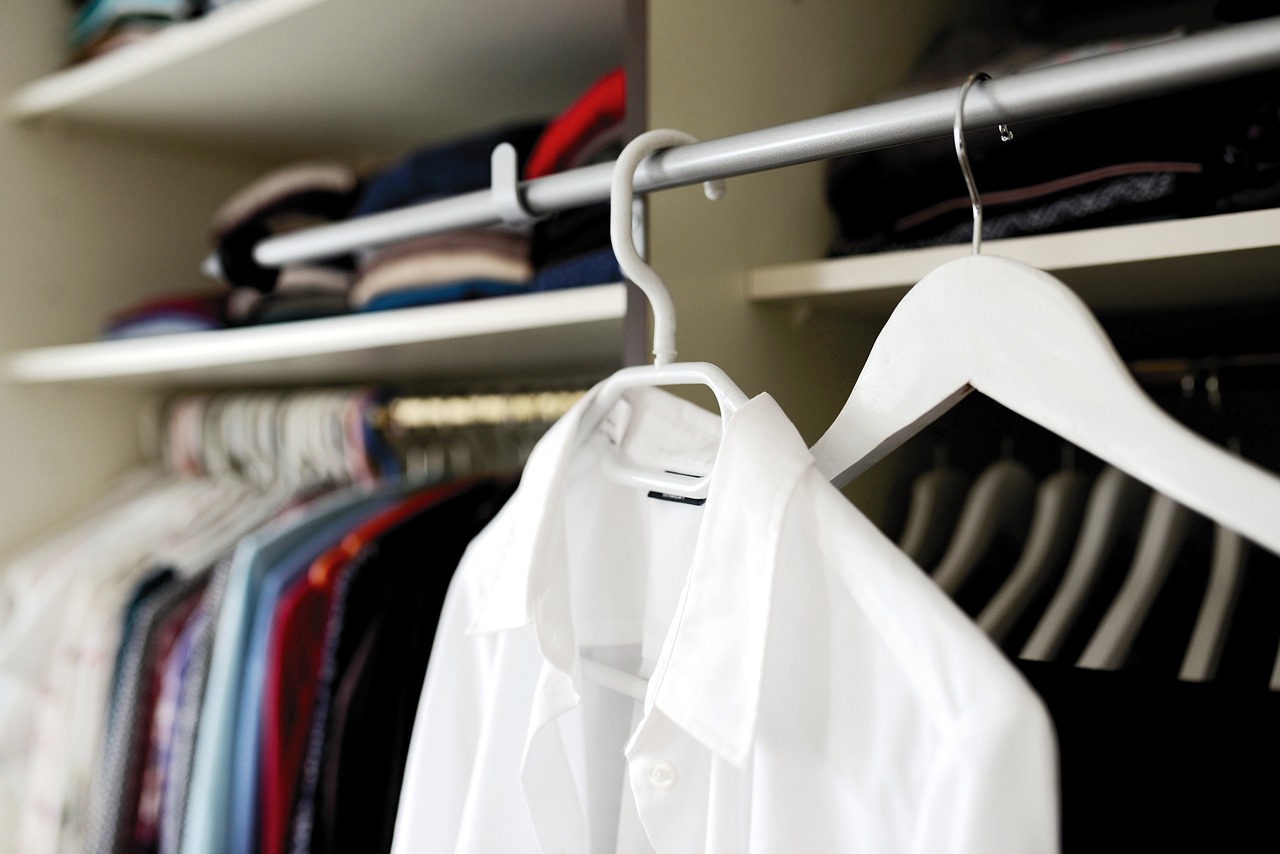
Why a Dressing Room Helps beat Hayfever
Designating a dressing room isolates pollen-laden clothing from your bedroom, keeping your sleep environment cleaner. When pollen particles transfer to your bed or pyjamas, they will likely affect you overnight. Even if temporary, a dressing room helps create an allergen-free zone where you can unwind without worrying about triggering allergy symptoms.
Steps to Set Up a Temporary Dressing Room for Hayfever
- Choose a Pollen-Free Zone
Ideally, pick a space close to the entryway or main living area to minimize the distance you have to carry pollen on your clothing. Bathrooms or spare rooms are ideal since they are easier to keep free of fabrics and furnishings that can collect pollen. Plus, bathrooms typically have fewer soft surfaces for pollen to cling to, making them easier to keep clean. - Use a Dirty Clothes Basket Outside the Bedroom
Place a dedicated laundry basket in your dressing area to collect outdoor clothing. This keeps used clothing separate and ensures allergens don’t make their way back into your bedroom. For extra protection, consider using a basket with a lid or a washable laundry bag that can be cleaned weekly. - Quick Shake-Off or Brush-Down
Before entering your dressing room, give your clothes a quick shake-off or brush down to dislodge pollen particles. If you’re wearing items like jackets, scarves, or hats, shake them outside the house if possible, as these items tend to gather more pollen. A small handheld lint roller in the dressing room can help remove any remaining particles from clothing. - Change Outer Layers First
If you need to enter your bedroom before changing, remove outer layers like jackets, shoes, and scarves immediately upon entering the dressing room. These items collect the most pollen and can spread it more widely if brought into your sleep space. Consider using an air-tight storage box or hanging these items in a designated area near the door. - Consider Adding a Small Air Purifier
Adding a small HEPA air purifier in your temporary dressing area can reduce pollen and other airborne particles, creating a cleaner space. Running it at low speed throughout the day can capture particles that float off when you change. This extra step helps limit pollen that may get into the bedroom.
4. Wash Your Face and Rinse Your Sinuses Before Bed
Washing your face before bed is essential during allergy season. Not only does this wash away pollen, but the warm water steam can also help open up your nasal passages for easier breathing.
- Sinus Rinse: A saline nasal spray or rinse can effectively remove pollen from your nasal passages, reducing the congestion and irritation that often accompany hay fever. This small step can make a big difference in comfort.
- Skincare Routine Bonus: If you’re washing your face, why not apply a gentle, hydrating moisturizer? It can soothe irritated skin that may have become dry or inflamed from frequent face-touching during the day.
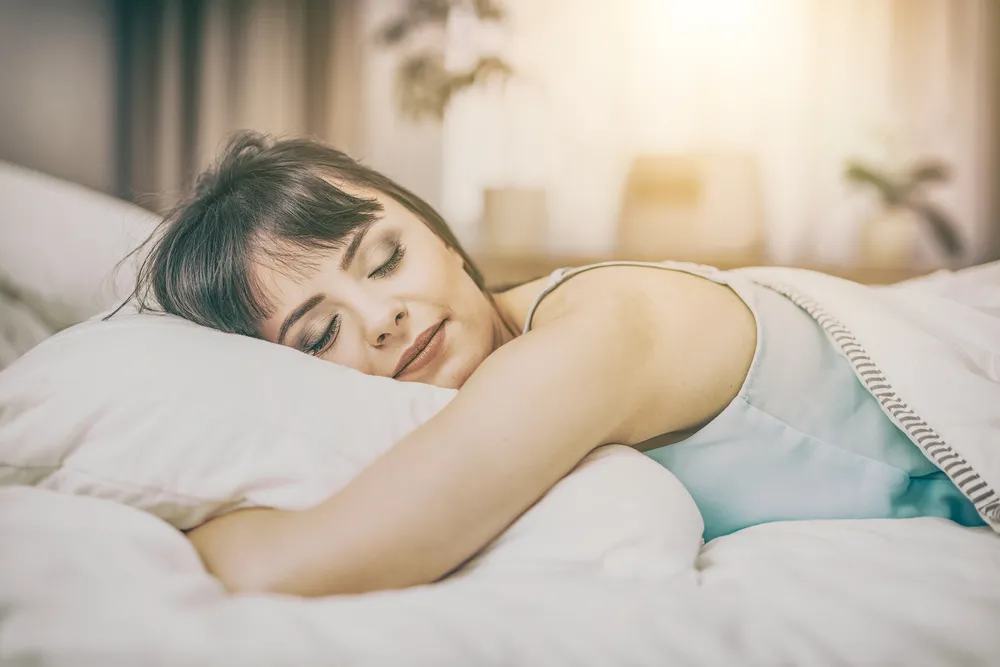

5. Tie Back Your Hair
- Braids or Buns: Tie your hair into a bun or braid to keep it away from your face, especially if you toss and turn. This prevents pollen from transferring to your pillow or skin.
- Silk Pillowcases: For extra prevention, try a silk pillowcase. Compared to cotton or synthetic options, silk is less likely to hold onto allergens.
6. Mind Your Diet
Believe it or not, what you eat can significantly impact hay fever symptoms. Certain foods can exacerbate allergies; others may help reduce inflammation and soothe the immune system.
Avoid Mucus-Producing Foods
It may sound gross and give you the ick, but dairy products, high-sugar foods, and alcohol can increase mucus production, potentially worsening congestion and irritation.
Anti-Inflammatory Choices
Opt for foods rich in vitamins C and E, known for their anti-inflammatory properties. Garlic, ginger, and chilli have natural anti-allergy effects, while eggs and oily fish are good sources of vitamin E.

Hydrate
Drinking enough water throughout the day can also help thin mucus, making it less likely to clog your nasal passages and worsen your symptoms. Hydration is also a key way to sleep better.
Staying hydrated at night can improve sleep quality because proper hydration supports bodily functions essential for rest. When you’re hydrated, your body maintains stable blood circulation, regulates temperature efficiently, and reduces the likelihood of issues like dry mouth and nasal passages, which can cause discomfort and wake you up. Proper hydration also helps reduce nighttime muscle cramps and headaches, which can interrupt sleep. However, it’s best to drink most fluids earlier in the evening to avoid frequent trips to the bathroom during the night.
7. Take an Antihistamine Before Bed
Taking an antihistamine before bed is one of the most effective ways to manage nighttime hay fever symptoms, as it directly targets the body’s allergic response. Antihistamines block histamines—compounds that your immune system releases in response to allergens. When pollen or other triggers enter the body, histamines bind to cell receptors, causing symptoms like itching, sneezing, and mucus production. By blocking these receptors, antihistamines help reduce inflammation and alleviate the discomfort of allergy symptoms.
How Antihistamines Aid Sleep
Research shows that nighttime use of antihistamines can be especially beneficial for sleep. Many antihistamines have mild sedative effects that can help you relax, fall asleep faster, and experience fewer awakenings due to symptoms like congestion or itching.
However, not all antihistamines are the same. First-generation antihistamines (like diphenhydramine) tend to have stronger sedative effects, whereas second-generation antihistamines (like cetirizine and loratadine) are often labelled as “non-drowsy” because they cause less sedation. These newer-generation antihistamines are typically recommended for those who want symptom relief without daytime grogginess.
Timing Matters with Antihistamines in Bed
Taking an antihistamine about 30 minutes to an hour before bed allows it time to be absorbed into the bloodstream and begin working. Peak concentrations generally occur within 1-3 hours, so by taking the antihistamine before bedtime, you can experience maximum relief when symptoms are likely to be at their worst.
Choosing the Right Antihistamine for Nighttime Relief
Studies show that antihistamines at night can improve sleep quality and reduce allergy symptoms, especially when combined with other interventions. According to a study published in Clinical Therapeutics, second-generation antihistamines such as cetirizine and fexofenadine significantly improved symptoms and sleep quality for hay fever sufferers compared to a placebo. The Journal of Allergy and Clinical Immunology also highlights that combining an antihistamine with a nasal steroid spray can provide superior relief compared to either treatment alone.
First-Generation (Sedative) Antihistamines
First-generation antihistamines such as diphenhydramine (Benadryl) are known to cross the blood-brain barrier, resulting in sedative effects. These may help some people with both symptom relief and falling asleep. However, they can also lead to “hangover” effects, causing grogginess the next day, especially in those sensitive to sedatives.
Second-Generation (Non-Drowsy) Antihistamines
Second-generation antihistamines, such as cetirizine (Zyrtec), loratadine (Claritin), and fexofenadine (Allegra), are often less sedating because they do not easily cross the blood-brain barrier. This can make them ideal for those needing effective symptom relief without significant next-day drowsiness. In fact, research suggests that cetirizine and fexofenadine, in particular, provide effective, long-lasting symptom control with minimal sedative effects.
It’s essential to consult with a healthcare provider or doctor whenever taking hayfever medication.
Hayfever Sleep Guide Summary
Implementing these simple yet effective strategies can significantly improve the quality of your sleep during hay fever season,” says Ryan Kerr. “By creating a cleaner, allergen-free sleeping environment and making small adjustments to your evening routine, you can minimize the impact of allergens and enjoy more restful nights.”
Don’t let hay fever keep you from getting the rest you need. With these practical tips, you can breathe easier and wake up feeling refreshed, even on the highest pollen days. For more insights on sleep and wellness, check out the thousands of other guides on this site or contact our small team.
Get A Great Night Sleep With John Ryan By Design
It’s not just dealing with hayfever that can help bring a fabulous night’s sleep; having a comfortable and supportive mattress is another key to enjoying a great night’s sleep. At John Ryan, we stock all manner of high-quality mattresses. So, if you think your mattress could contribute to your poor sleep quality (even if it’s only in part), then why don’t you browse our excellent range and see if you can find something that suits you better? And if you have any questions about our products, please don’t hesitate to contact us. Our friendly team of experts will be more than happy to listen to your requirements and help you to choose the mattress that will work best for you.

Dreaming of the perfect nights sleep?

Ask us a question
There are over 6000 questions and answers submitted by you on all questions about mattresses and bed problems. Enter a keyword such as Vi Spring, John Lewis beds, bad back or Memory Foam and see if your question has already been answered.
If you can’t find an answer in knowledge hub, ask a new question. We aim to respond to all questions within one working day.
Newsletter
Enter your email to join our newsletter. We’ll send you occasional news and mattress expertise.

